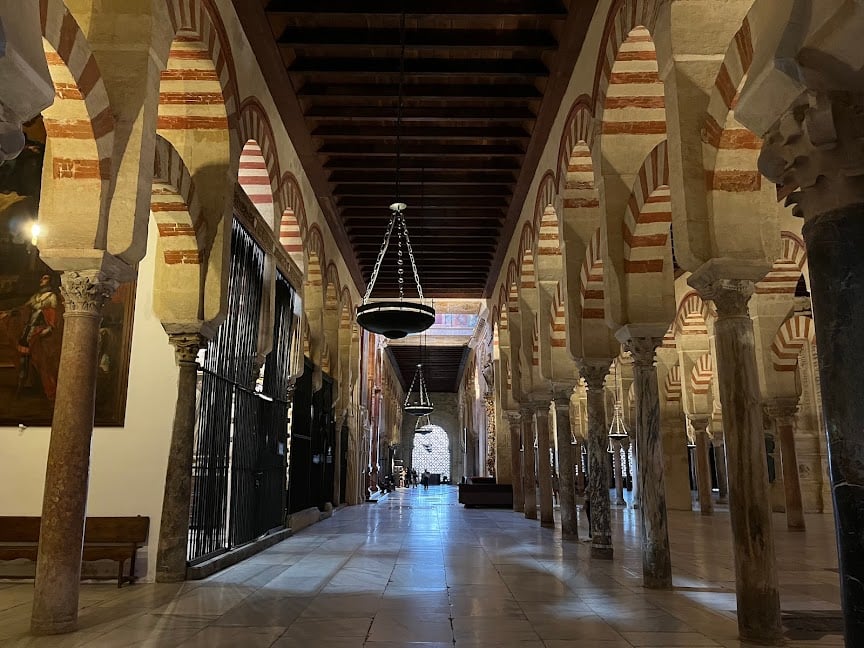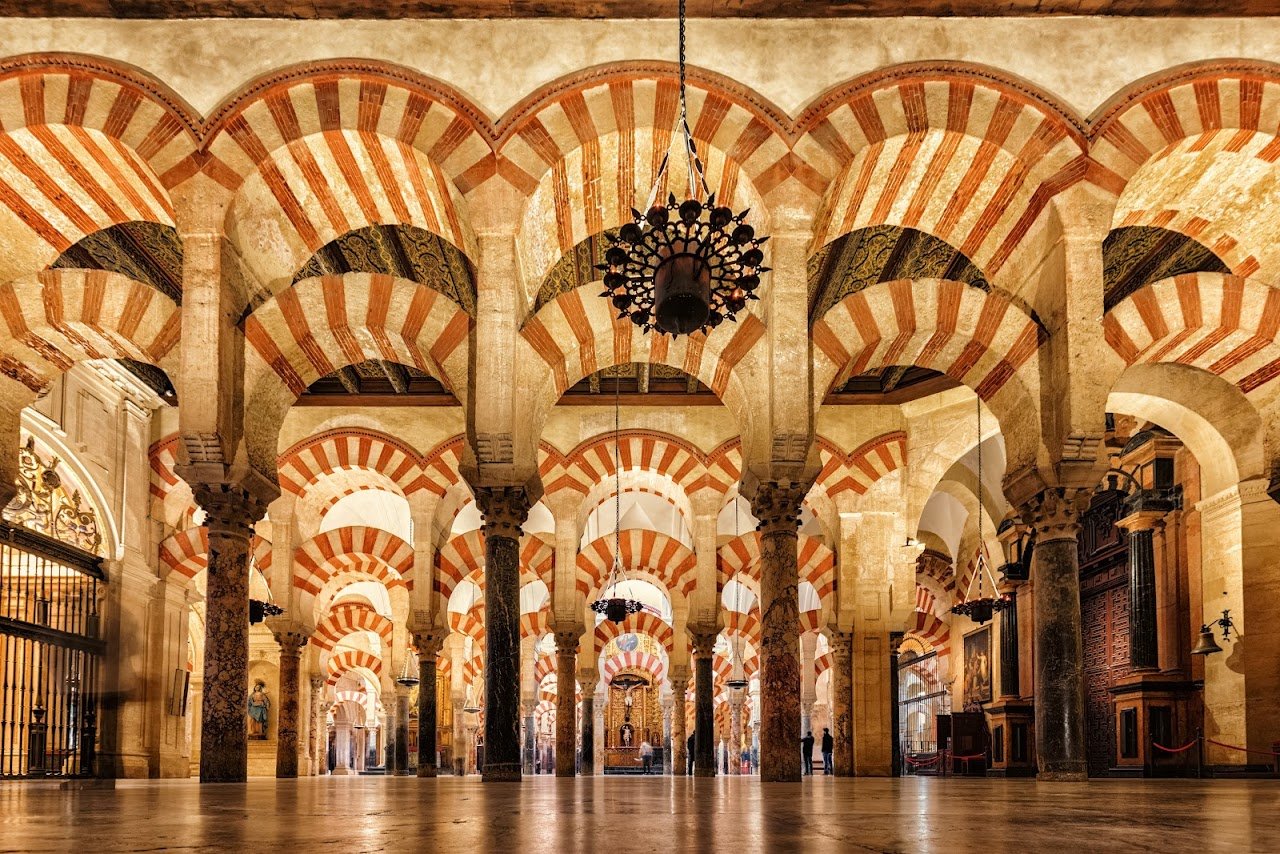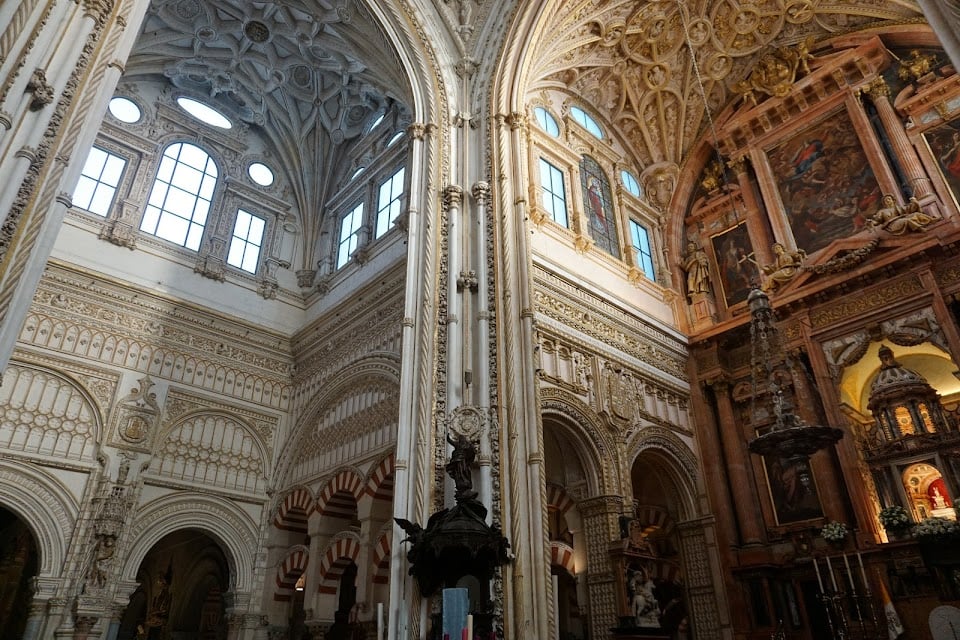Mosque-Cathedral of Córdoba





Ask ThatchGPT
Suggest a local expert to plan my trip
Suggest an unique itinerary for my Córdoba trip
What foods do Córdoba locals eat
What are some true hidden gems in Córdoba
Help me brainstorm trip ideas for Córdoba
Help me plan a family-friendly trip to Córdoba
What people say
Pedro Pereira
Available for hire
"The Mosque-Cathedral of Córdoba is a key temple in the entire Islamic West and the most visited monument in the city. With over thirteen centuries of history, this building served as a place of worship for Visigoths, Muslims and Christians, and today it is an essential monument for understanding the history of Córdoba.
The symbol par excellence of Córdoba is the mosque, a reflection of the power of the Caliphate and the legacy of Al-Andalus in the Iberian Peninsula. In addition, it is a monument that perfectly reflects the fusion of Umayyad art with other Christian elements.
Located in the historic center of the city, a few meters from the Roman Bridge over the Guadalquivir River, the Mosque-Cathedral has become one of the main tourist attractions in Córdoba.
Construction of the Mosque of Córdoba began in 786, under the mandate of the first Umayyad emir of Córdoba, Abd ar-Rahman I, on the remains of an ancient Visigothic basilica. During the early years of the Emirate of Córdoba, Muslims provided a space for Christians to practice their religion by paying the appropriate taxes.
However, the difficult coexistence of the two cultures and the increase in the number of Muslim believers led to its exclusive use as a mosque. As Córdoba grew during the Emirate and Caliphate, several extensions were necessary in the 9th, 10th and 11th centuries, which made this monument a unique mixture of styles and materials in the world.
For years, the Mosque of Córdoba was the largest mosque in the world. Today, the temple reflects the power of Córdoba as an Islamic place in the West during the Emirate and Caliphate.
The Mosque of Córdoba became a Christian cathedral in 1236, after the reconquest of the city by Ferdinand III the Saint. From that moment on, Muslims were expelled from Córdoba and chapels, altars and other Christian elements were built in the mosque.
In the 16th century, Charles V authorized the construction of the current Christian cathedral in the naves of the mosque. The result was a large building, with a Latin cross-shaped floor plan, “fitted” amidst the forest of columns in the Muslim prayer hall.
The result was the Mosque-Cathedral of Córdoba, a mix of Umayyad, Gothic, Plateresque, Renaissance and Baroque styles. The Mosque-Cathedral of Córdoba impresses from the first moment you pass through one of its five main doors. If today the dimensions of the temple impress any visitor, imagine the magnitude of this monument at the time it was built.
After nine centuries of constant evolution, the Mosque-Cathedral has reached record heights: 23,400 m2 of surface area, 1,300 columns from various periods and 365 horseshoe arches. Furthermore, it is the only mosque in the world that houses a cathedral inside. The most striking part of the Mosque-Cathedral of Córdoba is the forest of columns that forms the prayer hall. This sanctuary is made up of several naves composed of columns and two-tone horseshoe arches. In total, the prayer hall is divided into five different parts according to the materials used in each extension of the mosque.
In addition to the arcades, the most prominent element of the mosque is the mihrab. This element is located in the qibla, the wall facing Mecca, and is the most intimate space of the mosque, as it is the place from which the imam leads the prayer. The mihrab of the mosque of Córdoba is decorated with inscriptions from the Koran and a large horseshoe arch decorated with plant themes. The Courtyard of the Orange Trees was the center of Islamic life during the Emirate and Caliphate of Córdoba. Throughout this open space flanked by several galleries and porticos, teaching, justice and administration tasks took place.
The courtyard of the mosque has also undergone changes and extensions to adapt to the growth of the capital of al-Andalus. It is divided into three parts, each with a fountain or cistern for Muslims to purify themselves before prayer. The orange trees that give this courtyard its name mingle with palm trees, olive trees and cypresses. The current minaret of the mosque of Córdoba was built in the 10th century by Abd al-Rahman III to replace a smaller one from the previous period. The minaret was decorated with four pairs of horseshoe arches topped by a dome.
With the Christian reconquest of Córdoba, the old Islamic minaret was covered with baroque elements, giving way to a bell tower typical of Christian cathedrals. Inside the current bell tower, the original structure of the minaret is still preserved, and can be visited.
The Bell Tower of Córdoba currently stands at 54 meters and is the tallest building in the city. In 1236, the mosque of Córdoba was consecrated as a Christian cathedral, giving rise to some modifications, such as the construction of small chapels, vaults and the Royal Chapel to house the remains of the Christian kings. Finally, in 1523, Charles V ordered the construction of a large cathedral whose plan would have been in the shape of a Latin cross inside the mosque."
Read more in:
Elizabeth Rickert
Available for hire
"The Mosque-Cathedral of Córdoba, also known as the Mezquita, is an architectural marvel that embodies the rich and complex history of Córdoba. Originally constructed as a mosque in the 8th century, it was later converted into a cathedral following the Reconquista. This stunning edifice is renowned for its forest of red-and-white striped arches, intricate geometric patterns, and the magnificent Renaissance cathedral nave that rises within. The Mosque-Cathedral is a testament to the harmonious blend of Islamic and Christian architectural elements, offering visitors a profound glimpse into the city’s diverse cultural heritage and artistic grandeur."
Read more in:
Marina Bertolini
"The Mosque–Cathedral of Córdoba, officially known by its ecclesiastical name of Cathedral of Our Lady of the Assumption is the cathedral of the Diocese of Córdoba. Due to its status as a former mosque, it is also known as the Mezquita and as the Great Mosque of Córdoba.
The mosque was constructed in 785, when this part of Spain was under the Islamic power. Some additions were made in the next years until, in 1236, the mosque was converted into a cathedral after the reconquista. A renaissance navel was added and the minaret became the bell tower.
"
Read more in:
Mentioned in these guides
About Mosque-Cathedral of Córdoba
Get the inside scoop on Mosque-Cathedral of Córdoba from local experts, travel creators, and tastemakers. Browse genuine trip notes, Mosque-Cathedral of Córdoba reviews, photos, travel guides, and itineraries from real travelers and plan your trip with confidence.
Phone
Save this spot for later or start mapping out a new trip today
Try our AI Travel Assistant and get instant answers to any questions about your trip.
Ask ThatchGPT


